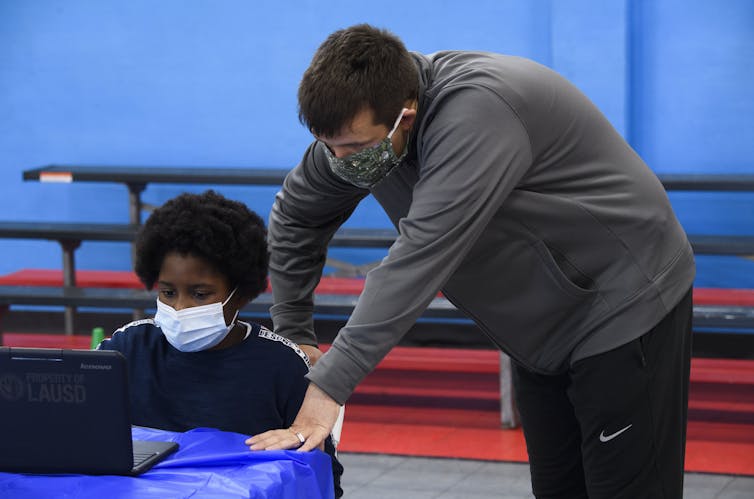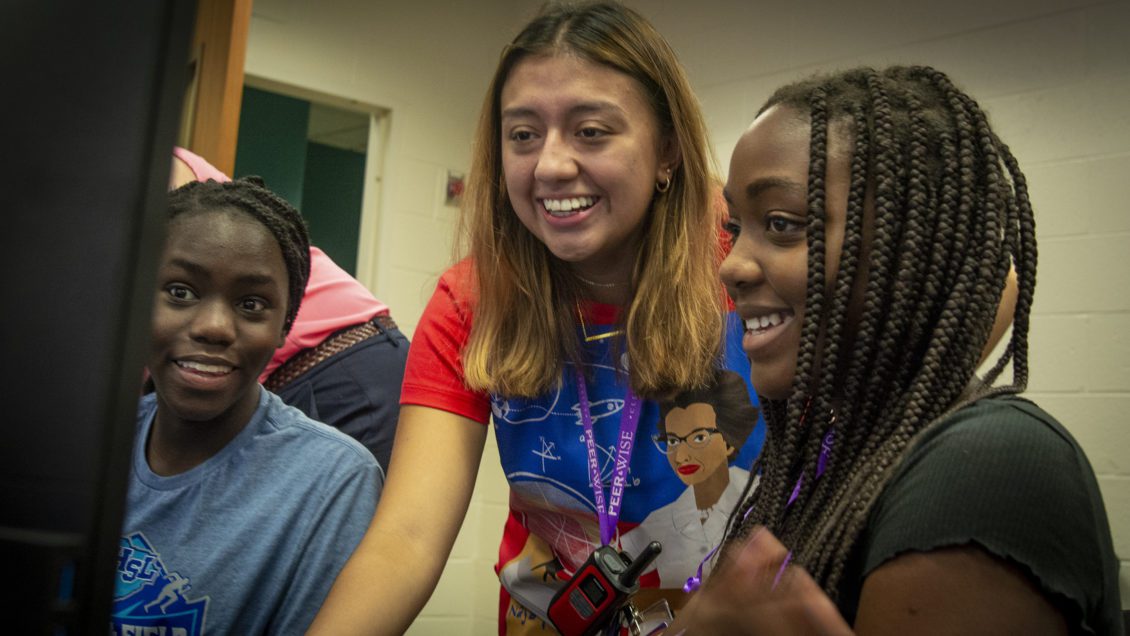Effective homework help can reduce stress for students and their families.
David S. Fleming, Clemson University
When it comes to after-school programs, there are all types from which to choose. But when it comes to finding a program that offers high-quality service and engaging activities that help children do better in school, that can be a challenge.
I know this because in the early 2000s, I evaluated after-school sites in the state of Florida as part of the federal 21st Century Community Learning Centers program.

I’ve seen some highly effective programs, such as one that taught students with developmental disabilities how to kayak and sail. But I’ve also seen a program in which officials seemed to be packing as many kids as they could into their facility because the program got funded based on how many students were registered. There were no structured activities. They even balked at my assessing how well they delivered services like homework assistance. They had so many kids to oversee, the notion of providing students with high-quality help seemed hardly to be a consideration.
At a different program I went to evaluate, at a rural high school in the Florida Panhandle, kids didn’t even know they were in a program.
“Program? What program?” a student responded to me once when I announced the reason I was there. “Coach just told us to meet someone in the library today for something.”
That was nearly 20 years ago. Since then, after-school programming has continuously struggled to meet demand, so finding a high-quality program may be even more difficult.
In 2020, one survey found, there were 24.6 million children who would have enrolled in an after-school program if one were available to them – 5.2 million more than in 2014, when the figure stood at 19.4 million.
Participation in an after-school program offers many benefits. Research has found, for instance, that it can boost students’ overall academic performance and behavior in school.
As an educator who focuses on how to ensure after-school programs actually help children learn, here are four elements that I urge parents and other caretakers to consider to make sure their children’s time in a program is time is well spent. Since many students suffered learning losses during the COVID-19 pandemic, I believe a sharper academic focus in after-school activities has taken on even greater importance.
1. Objectives and purpose
If a parent wants only a place for their child to be safe until they get off work, a program’s purpose may not matter. But most adults believe after-school programs should enable kids to explore topics of interest, try out new things and gain skills like communication and teamwork.
If a program description explicitly states that it provides homework assistance, tutoring, academic enrichment activities or opportunities to do community service, that is a good first step. Some programs have no discernible objectives, or they are broad and vague.
When programs use project-based academic activities, they can be effective in helping students to better understand specific subjects, such as math. The programs can be even more effective when the activities incorporate material from the child’s regular school.
That way, a program can maximize its academic impact. School-based programs have an advantage in this regard, since program staff can more easily communicate with staff from a child’s school.
2. Scheduled activities
If a program lacks a schedule that spells out what students will be doing, that can be a telltale sign that it doesn’t have much to offer. In my experience as a program evaluator, high-quality programs usually schedule activities in a way that helps promote their objectives.
For example, there are benefits when a specific time is set up for participants to complete homework with qualified staff who can provide meaningful help. When students complete their homework before coming home, it lessens stress for students and their families by saving more time for family activities and sleep.
3. Qualified staff
Parents should inquire about what kind of training and credentials staff have to do their jobs.
In terms of credentials, some examples include a child development associate certification, a certification in positive youth development or a certification through the National Enrichment Teachers Association. Such credentials show another level of professionalism.
Some programs may partner with a local college or university to bring on college students as volunteers. Research shows that college students bring a certain passion and enthusiasm to programs, and that participants “feel special” when older peers take an interest in them.
Parents should also ask how many staff members are on hand. The U.S. Department of Health and Human Services recommends a ratio of no more than 10 to 12 school-age students per qualified adult and groups of no more than 20 to 24 students with two qualified adults. When group and class sizes are reasonable, it better enables staff to provide high-quality learning experiences that can also include individual attention as warranted.
4. Daily attendance
Daily attendance patterns can offer clues about the level of student interest in a program. Don’t assume or accept that attendance is low because a program is too academic. Research has found that academic activities do not lower attendance at high-quality after-school programs.
Officials at successful programs expect regular attendance and collect attendance data. They know that if students don’t attend their programs, it will be a big challenge for the program to meet its goals and objectives.
When a program has clearly defined objectives, a schedule to meet those objectives, qualified staff members and students who attend regularly, the program tends to yield positive results, such as higher test scores and better work habits.
Parents and caretakers who know to look for these features should be better able to choose the best after-school program to meet their children’s needs.
David S. Fleming, Professor of Education and Department Chair, Clemson University
This article is republished from The Conversation under a Creative Commons license. Read the original article.

